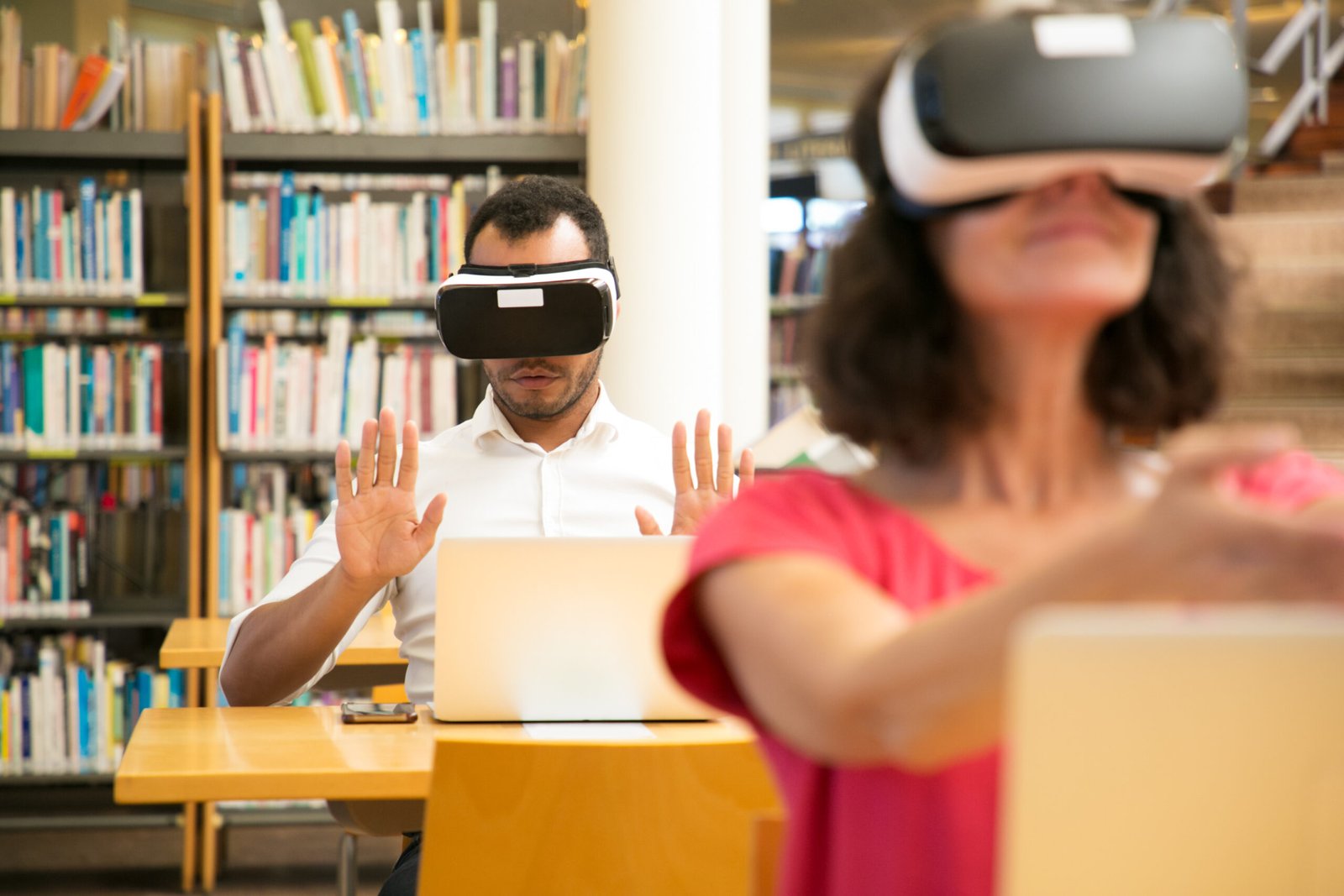AR and VR in Education: Transforming Learning

by Web Digital
In the ever-evolving landscape of education, emerging technologies have the potential to revolutionize the way we teach and learn. Augmented Reality (AR) and Virtual Reality (VR) are two such technologies that are making significant inroads into classrooms around the world. These immersive technologies offer new dimensions of engagement, interactivity, and understanding for students. In this article, we’ll explore the impact of AR and VR Education: Transforming Learning, their applications, benefits, and the challenges they bring to the forefront.
Understanding AR and VR Education
Before we dive into their applications in education, let’s clarify the difference between AR and VR.
Augmented Reality (AR): AR overlays digital content. Such as images, videos, or 3D models, in the real world. This means that you can see and interact with both the physical environment and digital elements simultaneously.
It replaces the physical world with a simulated one, usually experienced through VR headsets. VR provides an all-encompassing, 360-degree experience that can be entirely different from the real world.
Applications in Education
Interactive Learning: AR and VR provide an interactive and immersive learning experience. For instance, history lessons can come to life as students explore historical sites using AR apps. They can take a virtual journey through the solar system in a VR environment. This level of interactivity can greatly enhance retention and understanding.
Experiential Learning: With AR and VR, students can engage in experiential learning by simulating real-world scenarios. Medical students can practice surgeries in a safe virtual environment, and science students can conduct experiments without the need for physical equipment. This hands-on experience fosters better learning outcomes.
Enhanced Visualizations: Complex subjects can be made more accessible through visualizations. AR and VR allow students to explore intricate 3D models of molecules, biological organisms, or architectural structures. These visual aids make abstract concepts tangible.
Cultural Exploration: Students can travel the world and explore different cultures without leaving the classroom. AR apps can provide guided tours of famous museums and historical landmarks. While VR can create virtual field trips to far-flung destinations.
Language Learning: Language acquisition can be improved through AR and VR. Students can interact with native speakers in a virtual environment, practicing conversations, and improving their language skills.
Special Education: AR and VR can be especially beneficial for students with special needs. These technologies can adapt to individual learning styles and offer personalized assistance, making education more inclusive.
Benefits of AR and VR Education
The integration of AR and VR in education offers several notable advantages:
Engagement: These technologies capture students’ attention and maintain their engagement, reducing distractions and boredom often associated with traditional teaching methods.
Retention: Immersive experiences tend to improve information retention. Students remember what they’ve learned through experiences rather than passive reading or listening.
Accessibility: AR and VR can provide access to experiences and resources that may not be available in the physical classroom, offering students a broader and more inclusive education.
Safety: In subjects where safety is a concern, such as chemistry experiments or medical procedures, students can practice without real-world risks.
Cost Savings: While initial setup costs may be significant, in the long run, AR and VR can be more cost-effective than acquiring and maintaining physical equipment and resources.
Customization: Teachers can tailor lessons to students’ individual needs and learning styles, ensuring that no one is left behind.
Challenges and Considerations
As with any new technology, AR and VR in education come with their share of challenges and considerations:
Cost: Implementing AR and VR can be expensive, as it requires investment in hardware, software, and training for educators. Ensuring equitable access for all students can be a challenge.
Technical Issues: Technical glitches and compatibility issues can disrupt lessons. Schools must have robust IT support in place to address such issues promptly.
Content Quality: The effectiveness of AR and VR experiences largely depends on the quality of the content. High-quality, educational content can be scarce, and educators need to curate resources carefully.
Health Concerns: Extended use of VR can lead to motion sickness or discomfort for some individuals. Therefore, it is essential to monitor students for adverse physical or psychological effects.
Teacher Training: Educators need proper training to integrate AR and VR effectively into their teaching. Professional development is necessary to maximize the potential of these technologies.
Privacy and Data Security: Collecting data on students’ interactions with AR and VR tools raises concerns about privacy and data security. Schools must implement strict safeguards to protect sensitive information.
The Future of Education
As technology continues to advance, AR and VR are poised to play an increasingly significant role in education. These technologies have the potential to bridge the gap between theoretical learning and real-world application, making education more engaging and effective.
Educational institutions, policymakers, and tech companies need to work together to address the challenges and ensure that AR and VR become accessible and beneficial tools for students of all backgrounds. The integration of these immersive technologies into education is not just a matter of keeping up with the times; it’s about providing students with the tools and experiences they need to thrive in a rapidly changing world. The future of education is being transformed by AR and VR, and it holds tremendous promise for learners of all ages.
Recommended Posts

Web Design Portfolio Tips for Canadian Freelancers
September 27, 2025

The Cost of SEO Services in Canada
September 27, 2025

How to Use Google Business Profile for Local SEO
September 26, 2025
